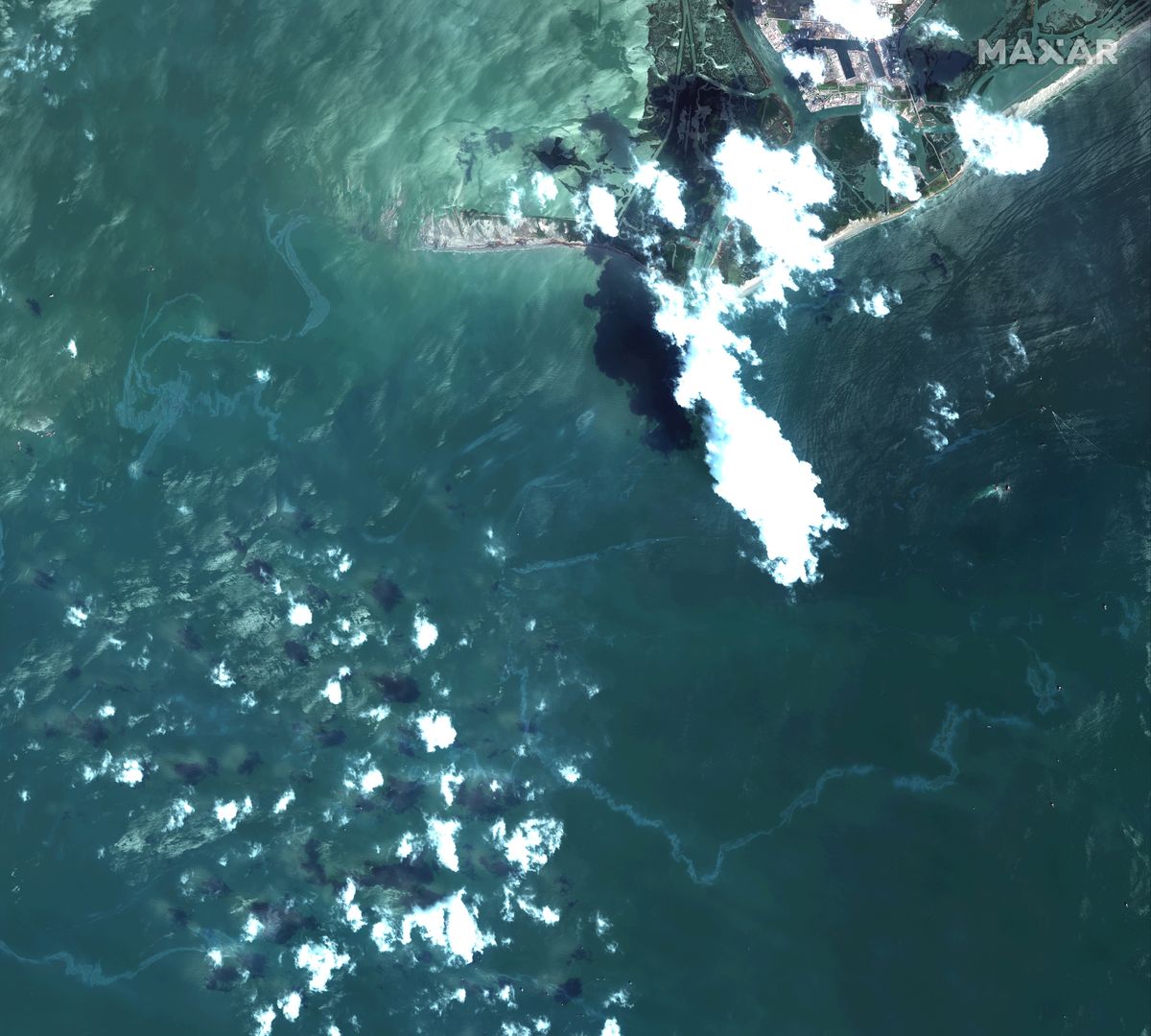
Three oil slicks can be seen in the East Timbalier National Wildlife Refuge area, south of Port Fourchon (Louisiana).
Satellite images captured aerial views of an oil leak in the Gulf of Mexico one week after Hurricane Ida devastated the region.
On Aug. 29, Hurricane Ida, a Category 4 hurricane, made landfall near Port Fourchon in Louisiana. It brought sustained winds of 150 mph (240 km/h), torrential rain, and a strong storm surge that caused flooding along large stretches of the coast. A large oil spillage in the Gulf of Mexico appears to have been caused by Hurricane Ida, which is visible from space in September 4 images taken by Maxar Technologies satellite.
The underwater source of the leak was identified by divers as a ruptured pipeline located 2 miles (3 km) south of Port Fourchon. According to the Associated Press, the pipeline was 1 foot (30 cm) in diameter and was displaced from a trench at the ocean floor by the storm. It burst open due to the force of the storm.
Related: Hurricane Ida in space: Photos by astronauts and satellites
Satellite images show oil spots, or dark brown or black streaks of crude oil, floating on the water surface near East Timbalier National Wildlife Refuge south of Port Fourchon.
According to the Associated Press, cleanup crews are currently working in the area to minimize the oil spillage. It is estimated that the oil slick extends for at least 10 miles (16km) and is moving eastward along the Gulf Coast. The pipe was found in shallow water at 34 feet (10 metres) depth.
Reports suggest that the oil leakage has not reached the Louisiana coast and is still out at sea. According to the Associated Press, although crews are yet to estimate how much oil has leaked into water, it appears that the rate at which oil is appearing on the ocean's surface has slowed.
Image 1 of 3 Clean Gulf Associates is a non-profit oil spillage response cooperative that placed a containment boom to stop the spread of oil. (Image credit: Satellite photo 2021 Maxar Technologies.) Image 2 of 3. Oil stains can be seen on the Gulf of Mexico's surface in this satellite image, taken Sept. 4, 2021. Image credit: Satellite image 2021 Maxar Technologies. Image 3 of 3 Satellite images of the region on Sept. 4, 2021 revealed widespread oil slicks that have not yet reached the Louisiana coast. Image credit: Satellite image 2021 Maxar Technologies
Two smaller, open-air pipelines were also discovered by divers who searched the area. Although it is unclear if those 4 inch (10 cm) diameter pipelines are leaking oil, Maxar satellite images show at most three different slicks within the same area.
Talos Energy, a Houston-based firm, has hired Clean Gulf Associates, a non-profit oil-spill response cooperative, to reduce the spread of the oil. Even though the oil company claims that the pipeline is not theirs, they are still investigating the source of the leak.
National Oceanic and Atmospheric Administration shared aerial views taken Sept. 2 of an area affected by the oil spillage. According to The New York Times, the NOAA images reveal a dark streak, which is an indication that thick, heavy oil has been surrounded by a rainbow shine.
Follow Samantha Mathewson @Sam_Ashley13. Follow us @Spacedotcom on Twitter and Facebook.
